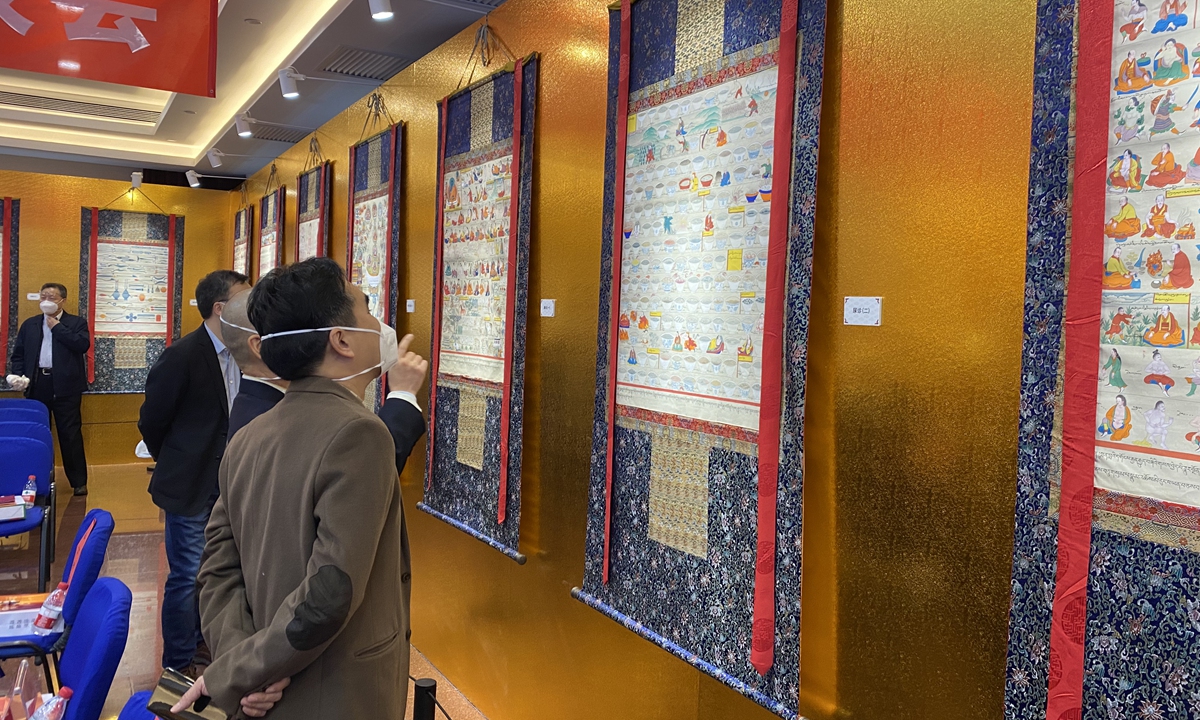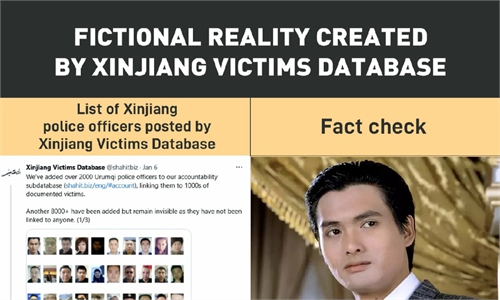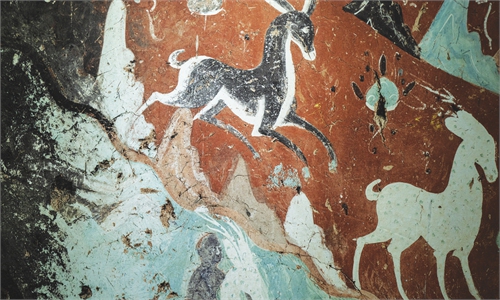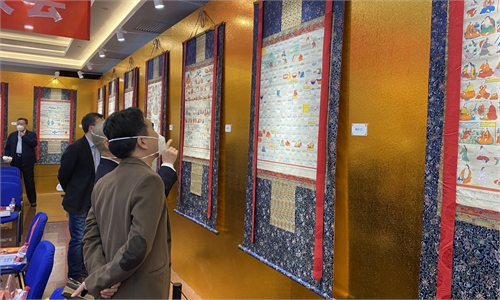Digitized database of Tibetan medicine will promote high-quality cultural development

Spectators watch Thangka (Tibetan Buddhist paintings on cotton or silk) showing Tibetan medicine prescription and treatment at the Beijing Hospital of Tibetan Medicine in Beijing on October 30, 2022. Photo: Shan Jie/GT
A few days ago, the Chinese Tibetan Medicine Database Platform was officially launched online. It aimed to combine, preserve and utilize the Tibetan medicine resources through modern technology.
The Tibetan medicine is a part of the Tibetan culture and a pearl in the traditional Chinese medicine. The digitization of these resources is significant in standardizing Tibetan medicine and preserving Tibetan culture.
The next step is to receive more data and publish them online "one batch after another"after approval, in support of the modernization, standardization, and industrialization of Tibetan medicine. This will ensure the continuous inheritance of Tibetan medicine culture and its high-quality industry development.
The Tibetan medicine, boasting a history of more than 2,000 years, is a traditional medical system taken shape by integrating the traditional Chinese medicine, Indian medicine and Arab medicine. It combines ancient Tibetan philosophy, astronomy, biology, physics, chemistry and psychology. Particularly, it is closely related to Tibetan Buddhism. Generally, in the large Tibetan lamaseries, there was always a medical college teaching Tibetan medicine, and the time-honored secret recipes for curing complicated diseases have also been passed down by lamas until now. Before treatment, Buddhist scriptures were normally chanted and prayers were made for more effective disease cure.
However, the Tibetan medicine is not solely religious, but a very rigorous scientific medical system. There are a great number of Tibetan medical doctors who wrote nearly a thousand medical books with the Four Medical Tantras, Somaratsa and Brilliant Pearl Herbology as the masterpieces, which marked the beginning of the written records of the Tibetan medicine.
The Qinghai-Tibet Plateau where Xizang is located boasts many cold-resistant, anti-hypoxic and non-pollutant medicinal herbs. In 2020, a project was initiated by the Xizang Medical Products Administration to fully utilize their unique advantage.
Over the past three years, professionals have completed the work of collecting medicinal materials, making samples, photographing and recording. The establishment of this platform will also ensure the continuous inheritance of Tibetan culture, and help the Tibetan medicine serve the country and go global.
In addition, the distinctive feature of the Tibetan medicine lies in its medicinal processing technologies. By making full use of their expertise and experience, experts in Xizang translated, supplemented and improved the Tibetan language edition processing standards enacted in 2008, which was essential to promoting the high-quality development of Tibetan medicine, according to the administration.
That was how the Processing Standards of Tibetan Medicinal Materials(the Standard Chinese Edition) were also issued on the same day, marking a step further in the standardization of the Tibetan medicine. It is reported that it covers 62 varieties of medicinal plants, 73 species of mineral medicinal materials, and 47 kinds of animal medicinal materials. It clarified the origin of medicinal materials, specified the key technological knowledge, and standardized the technical terms to ensure the quality in the research and development, production and application of the Tibetan medicine, meeting international standards.
In order to preserve the treasure of the Tibetan ethnic group, great efforts have been made in Xizang. After its Democratic Reform in 1959, the Xizang Tibetan Medicine Hospital was established for both research and medical treatment. Since the 18th CPC National Congress in 2012, the Tibetan medicine has seen an all-round development in medical care, health care, research, teaching, production and culture, playing an important role in ensuring the health of people of all ethnic groups in China.
In the 14th Five-year Plan Period(2021-25), Xizang has laid more emphasis on training, higher education and continued education of personnel to accelerate the application of the technological results for high-quality development of the Tibetan medicine. The Xizang Tibetan Medical University became the only higher institution of Tibetan medicine in China, which has trained over 100 inheritors and set up 45 workshops in this regard.
Additionally, the first clinical research base of ethnic minority medicine in China was founded in Xizang, with a collection of more than 300 ancient medical literature, pooled 100,000 famous prescriptions from noted Tibetan medicine doctors, and studied 34 classic prescriptions. Up to now, a Tibetan medical service system has been established covering the whole region with Lhasa as its center. There are 49 publicly owned Tibetan medicine hospitals and 33 privately owned hospitals, offering 3.34 million clinical treatments annually.
All the above measures prove that the Tibetan medicine has been well protected. As an essential component of Tibetan culture, it has been fully developed instead of "being destructed." And it will flourish along with China's path to modernization in the new era.



